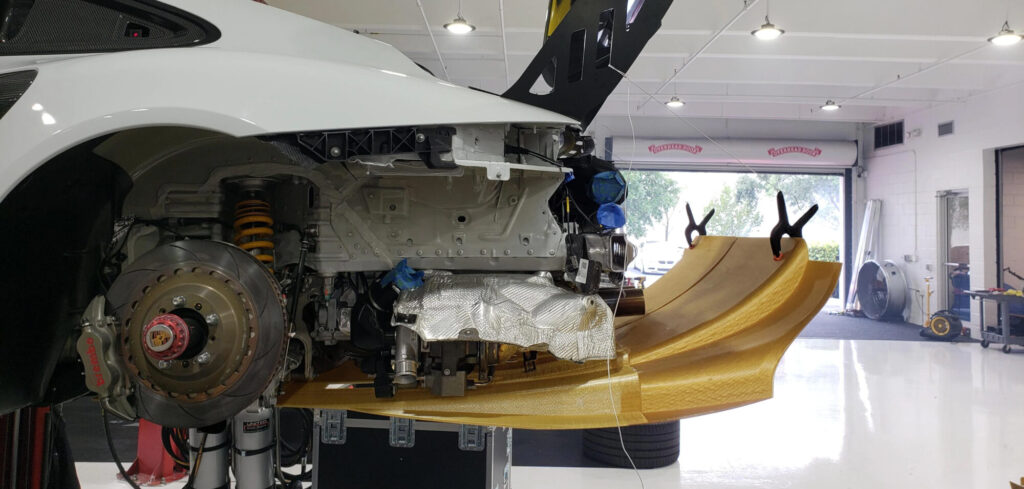At last month’s running of the Pikes Peak International Hill Climb, the Time Attack 1 class winner, a Porsche 911 GT2 RS of Champion Motorsport, was developed with the use of some innovative additive-manufactured (AM) parts.
Thanks to a technical partnership with specialist Stratasys, the car sported a variety of functional AM parts, including turning vanes and winglets, but the most impressive development was the use of a printed core for functional prototypes of the rear diffuser.
Produced on a Stratasys F900 printer using the company’s Ultem1010 resin material, the core replaced the usual sandwich materials of aluminum and Nomex honeycomb or foam. Acting as the internal tool for the outer carbon composite skin, this would normally have to be either machined or hand shaped. By using a printed part, the team says it was able to save considerable manufacturing time and work through more iterations during a compressed track testing schedule.
“Speed was the priority when creating this wing,” said Chris Lyew from Champion Motorsport. “We had test dates we had to hit and without this tool-free process, we could not have met these deadlines.”
The core was printed in seven pieces in Minnesota and shipped to Champion’s headquarters in Florida. Upon arrival at the Champion garage, the team assembled the sections and laminated the piece with pre-preg carbon fiber, vacuum bagged the assembled piece and oven cured it. “We were able provide Champion with a part that allowed them to quickly and easily modify their car for ultimate performance at extreme altitudes – all while saving time and expense,” concluded Pat Carey, senior vice president of strategic growth for Stratasys.”
This was not Champion’s first foray into printed composite tooling. The team has previously developed carbon-fiber ducts using dissolvable printed cores, the benefit being that a very complex duct geometry could be created, without the need for extensive machining processes, and the finished part featured no seams, as would be the case with a traditional two-piece design formed around a solid tool. The cars side skirts also featured a printed core, with a honeycomb internal support structure wrapped in pre-preg carbon.



